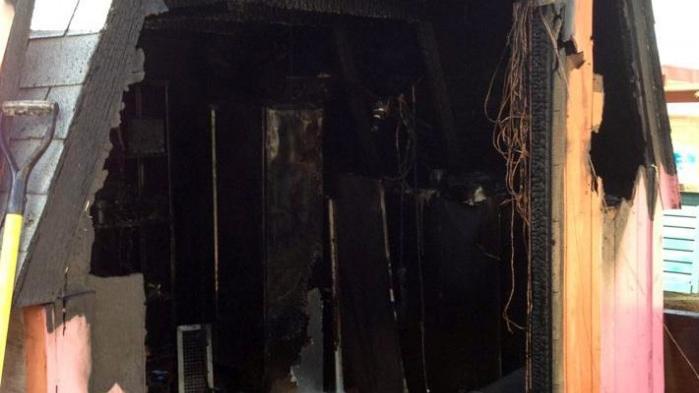Trump's Proposed Funding Shift: Harvard Vs. Trade Schools

Table of Contents
The Rationale Behind the Proposed Funding Shift
Trump's stated reasons for prioritizing trade schools centered on bolstering the American workforce and fostering economic growth. The core argument revolved around addressing a perceived skills gap, impacting job creation and economic competitiveness. Key arguments included:
-
Addressing the Skills Gap: A significant portion of Trump's argument focused on the perceived mismatch between the skills taught in higher education and the demands of the modern workforce. High unemployment rates among graduates of certain liberal arts programs, contrasted with increased demand for skilled tradespeople in fields like construction, manufacturing, and technology, fueled this perspective.
-
Boosting Manufacturing and Skilled Trades: The proposed shift aimed to revitalize American manufacturing and other skilled trades. By investing in vocational training, the administration hoped to create a pipeline of highly skilled workers to fill these crucial roles, reducing reliance on foreign skilled labor.
-
Creating High-Paying Jobs: The administration emphasized the potential for trade schools to provide a faster, more affordable pathway to high-paying jobs. This contrasted with the often substantial debt accumulated by students pursuing four-year degrees, particularly in fields with limited job prospects.
-
Reducing Reliance on Foreign Skilled Labor: A key component of the rationale was to reduce the United States' dependence on foreign workers for skilled labor. Investing in domestic vocational training was presented as a solution to this issue, promoting national self-sufficiency.
Arguments Against the Proposed Shift
While the need for skilled labor is undeniable, counterarguments against Trump's proposal highlighted the broader contributions of higher education and the potential for unintended consequences. Critics argued that:
-
Research and Development is Crucial: Elite universities like Harvard play a significant role in research and development, contributing to groundbreaking innovations across various fields, from medicine to technology. Redirecting funding could stifle this crucial engine of economic growth and technological advancement.
-
Liberal Arts Education's Broad Benefits: The value of a well-rounded liberal arts education extends beyond specific job skills. It cultivates critical thinking, problem-solving abilities, and communication skills—qualities vital for success in diverse careers and for informed citizenship.
-
Exacerbating Economic Inequality: Critics warned that shifting funding away from need-based aid programs at elite universities could exacerbate economic inequality, limiting access to higher education for low-income students. This would disproportionately impact students from marginalized communities.
-
Diverse Educational Pathways are Essential: A healthy society requires diverse educational pathways. Focusing solely on vocational training neglects the importance of other fields of study and the broader needs of a well-rounded society. A balanced approach is crucial.
The Impact on Specific Industries
The proposed funding shift's impact would vary significantly across different industries. While sectors like manufacturing and construction would likely see a boost in skilled labor, others might face challenges. The technology sector, for instance, requires both highly specialized technical skills and a broader understanding of the societal implications of technological advancements. The healthcare industry, similarly, requires a blend of skilled technicians and highly trained medical professionals. A holistic approach to workforce development is necessary to ensure that all industries have access to the talent they need.
Alternative Approaches to Workforce Development
Instead of a zero-sum game between Harvard and trade schools, alternative approaches to workforce development could better address the skills gap:
-
Expanding Apprenticeships: Robust apprenticeship programs, combining on-the-job training with classroom instruction, offer a proven pathway to skilled employment. Expanding these programs could effectively address the skills gap while providing structured learning experiences.
-
Investing in On-the-Job Training: Businesses can play a key role by investing in on-the-job training and mentorship programs for their employees. Government incentives could encourage such initiatives.
-
Strengthening Public-Private Partnerships: Collaboration between educational institutions, businesses, and government agencies can create more effective workforce training programs tailored to specific industry needs.
-
Career Counseling and Job Placement Services: Improving career counseling and job placement services can help students make informed decisions about their educational and career paths, matching their skills and interests with available opportunities.
Conclusion
Trump's proposed funding shift highlights the complex interplay between higher education, vocational training, and economic development. While the need for a skilled workforce is undeniable, a balanced approach is crucial. Simply shifting funds from elite universities to trade schools overlooks the broader contributions of higher education and risks exacerbating existing inequalities. The debate over funding for higher education and vocational training underscores the urgent need for a comprehensive and nuanced approach to workforce development. We need further discussion and policy solutions that address the skills gap and ensure access to quality education for all Americans, regardless of their chosen career path. Let's continue the conversation about effective strategies for improving our nation's higher education and vocational training systems, ensuring a thriving and competitive workforce for the future.

Featured Posts
-
 Jannik Sinners Tough Italian Open Draw Alcaraz And Zverev Await
May 28, 2025
Jannik Sinners Tough Italian Open Draw Alcaraz And Zverev Await
May 28, 2025 -
 Near Tragedy Averted Tucson Firefighters And Roof Collapse
May 28, 2025
Near Tragedy Averted Tucson Firefighters And Roof Collapse
May 28, 2025 -
 Pacers Vs Knicks Game 2 Tyrese Haliburton Prop Bets And Predictions
May 28, 2025
Pacers Vs Knicks Game 2 Tyrese Haliburton Prop Bets And Predictions
May 28, 2025 -
 Padres Atlanta Trip Acunas Return Looms Large
May 28, 2025
Padres Atlanta Trip Acunas Return Looms Large
May 28, 2025 -
 Late Inning Rally Propels Angels Past Blue Jays
May 28, 2025
Late Inning Rally Propels Angels Past Blue Jays
May 28, 2025
Latest Posts
-
 Malcolm In The Middle Reunion Frankie Muniz Bryan Cranston And Jane Kaczmarek Reunite
May 29, 2025
Malcolm In The Middle Reunion Frankie Muniz Bryan Cranston And Jane Kaczmarek Reunite
May 29, 2025 -
 The Bryan Cranston Net Worth 2025 Prediction Analyzing His Career Earnings
May 29, 2025
The Bryan Cranston Net Worth 2025 Prediction Analyzing His Career Earnings
May 29, 2025 -
 Estimating Bryan Cranstons 2025 Net Worth Income Sources And Projections
May 29, 2025
Estimating Bryan Cranstons 2025 Net Worth Income Sources And Projections
May 29, 2025 -
 Bryan Cranston Net Worth 2025 How Much Has He Earned
May 29, 2025
Bryan Cranston Net Worth 2025 How Much Has He Earned
May 29, 2025 -
 The Casts Reaction A Demon Transformation That Went Too Far
May 29, 2025
The Casts Reaction A Demon Transformation That Went Too Far
May 29, 2025
